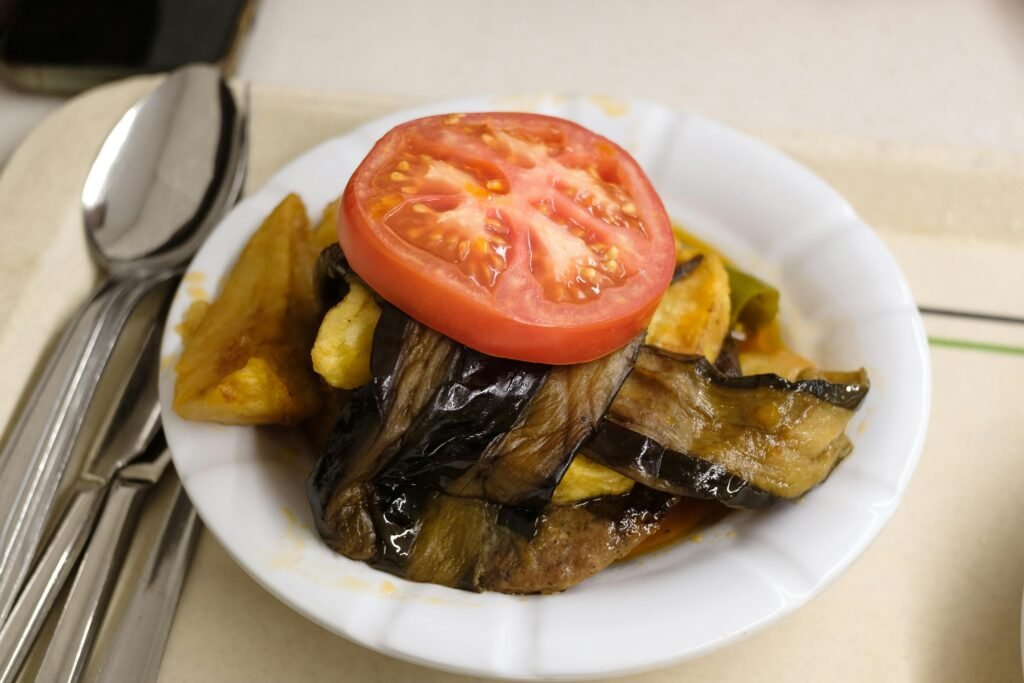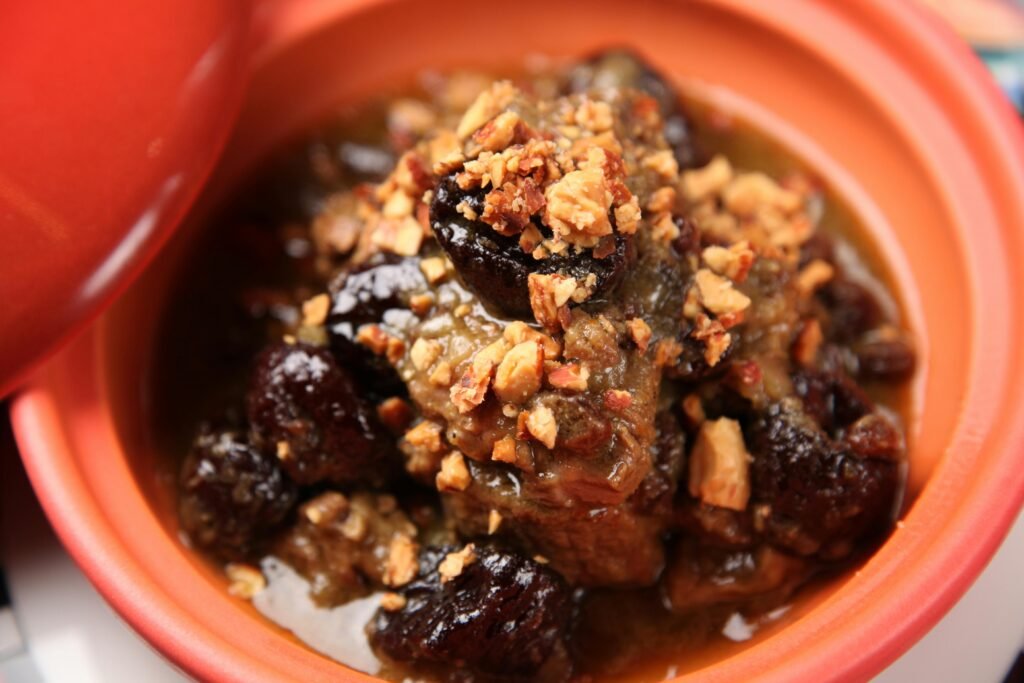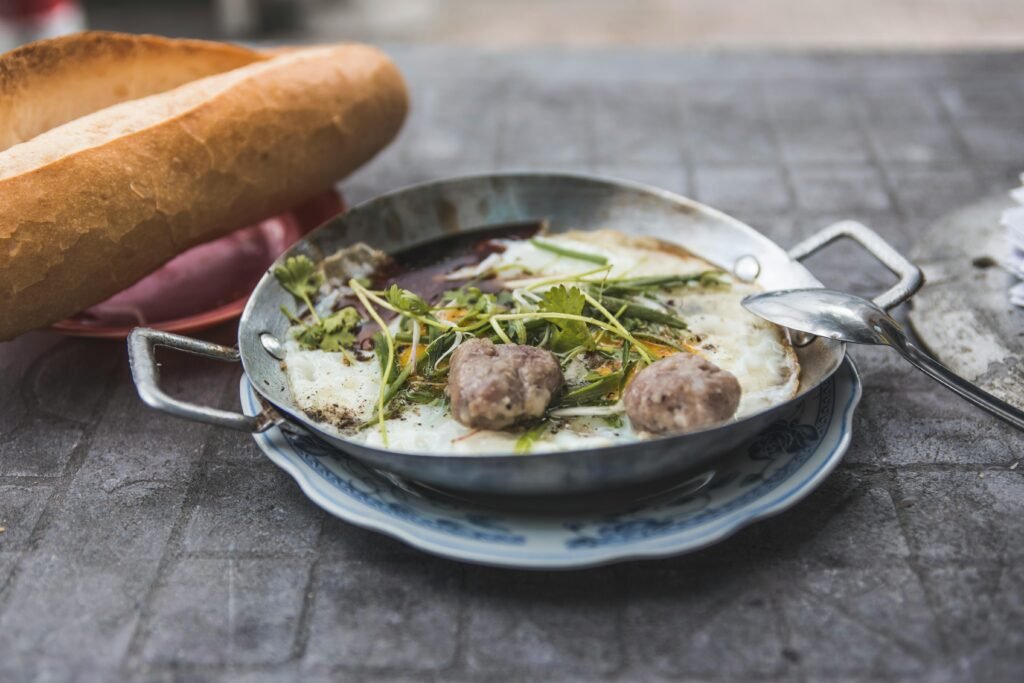Introduction to European Culinary Delights
The culinary landscape of Europe is a vibrant tapestry woven from diverse cultures, traditional recipes, and local ingredients. Each country offers a unique gastronomic experience, reflective of its history, geography, and societal influences. Travelers and food enthusiasts alike are often drawn to Europe’s rich culinary heritage, which presents an array of flavors that can tantalize any palate. From the hearty stews of Eastern Europe to the delicate pastries of France, the continent serves an impressive array of must-try dishes that celebrate the artistry of cooking and the joy of eating.

In Europe, the ingredients often dictate the culinary practices, showcasing seasonal produce and regional specialties that highlight local agriculture. For instance, Mediterranean countries are known for their use of fresh seafood, olive oil, and vibrant herbs, contributing to dishes that are not only visually stunning but also packed with flavor. The contrasting colder climates in parts of Northern Europe favor robust ingredients such as root vegetables and game meats, resulting in heartwarming meals that warm the body and soul.
This culinary exploration extends beyond mere sustenance; it serves as a means of cultural expression and community bonding. In every region, family recipes are passed down through generations, reflecting time-honored traditions that bring people together. Festivals and local markets further embody the essence of European cuisines, allowing both locals and visitors to savor authentic dishes crafted with passion and pride.
As we embark on this culinary journey across Europe, we will uncover a selection of must-try dishes that embody the spirit of their respective countries. Each dish tells a story, revealing the intricacies of cultural practices and regional flavors, affirming why Europe remains a cherished destination for food lovers from around the globe.
Italy: The Art of Pizza
Italy is renowned for its culinary contributions, with pizza standing out as a quintessential dish that has gained worldwide acclaim. Its origins trace back to Naples in the late 18th century, where the first pizzerias began serving this simple yet delectable dish to locals and travelers alike. What sets authentic Italian pizza apart is the dedication to quality ingredients and traditional preparation methods, which have been meticulously preserved over generations.

Central to the making of authentic pizza are two key ingredients: San Marzano tomatoes and mozzarella di bufala. Grown in the fertile volcanic soil surrounding Mount Vesuvius, San Marzano tomatoes are prized for their sweetness and low acidity, making them the perfect base for a rich and flavorful sauce. Complementing this is mozzarella di bufala, a creamy cheese crafted from the milk of water buffalo, which adds a unique texture and taste that cannot be replicated with cow’s milk. Together, these components create the signature Margherita pizza, a must-try for any food enthusiast.
While Naples is revered as the birthplace of pizza, it is essential to explore regional variations across Italy. In Rome, for instance, pizza al taglio features a thicker, rectangular crust that is often sold by weight, while in Sicily, you’ll encounter sfincione, a fluffy, doughy version topped with various ingredients. Each of these variations showcases the versatility of pizza, reflecting local tastes and culinary traditions.
Trying authentic Italian pizza is not merely a gastronomic experience; it is a journey into Italy’s rich cultural heritage. The meticulous craft involved in creating the perfect pie ensures that each bite transports you to its origins in the vibrant streets of Naples, offering an unparalleled taste that every food lover should savor. This delectable dish stands as a testament to Italy’s deep-rooted passion for food and tradition, making it an integral part of any culinary tour of Europe.
France: The Elegance of Coq au Vin
Coq au Vin is a quintessential French dish that embodies the nation’s affinity for rich flavors and culinary craftsmanship. This iconic recipe, which translates to “rooster in wine,” traditionally features chicken braised slowly in red wine, with the inclusion of aromatic ingredients that enhance its depth of flavor. Commonly used wines for this dish include Burgundy or other full-bodied wines, which not only serve as a cooking liquid but also contribute to the overall taste profile.
The preparation of Coq au Vin requires several key ingredients, among which are mushrooms, lardons (small cubes of bacon), pearl onions, and various herbs such as thyme and bay leaves. The cooking process begins with marinating the chicken in wine, allowing the poultry to absorb the robust flavors. Following this, the meat is browned, and the vegetables are sautéed to develop a caramelized texture. The combination of these elements is then slowly simmered to create a tender and flavorful dish that is a hallmark of French cuisine.
Historically, Coq au Vin symbolizes the rustic, hearty meals that are an integral part of French culinary tradition. Originating from the region of Burgundy, this dish exemplifies how local ingredients can be transformed into a significant cultural asset. It is often associated with familial gatherings and communal dining, showcasing the French way of appreciating meals as social experiences rather than mere sustenance. Renowned chefs have elevated Coq au Vin to gourmet status, making it a must-try dish for anyone visiting France, whether in a home or a fine dining establishment.
In essence, Coq au Vin is not merely a dish but a rich tapestry of French heritage, flavor, and social engagement, making it an unparalleled experience for food lovers exploring the diverse culinary landscape of France.
Spain: Tapas and the Joy of Sharing
Spain is renowned for its vibrant culinary traditions, with tapas standing out as a quintessential element of the dining experience. Tapas are small plates that encourage conviviality and a communal atmosphere, allowing diners to sample a diverse array of flavors and textures. This practice of sharing food sets the stage for not just a meal but an inviting social experience that resonates deeply within Spanish culture.

Among the most beloved tapas is patatas bravas, which features crispy potatoes served with a spicy tomato sauce or aioli. This dish perfectly illustrates the balance of simplicity and flavor that characterizes many tapas. Another staple is jamón ibérico, a type of cured ham that is notable for its rich taste and marbled fat, resulting in an exquisite melt-in-the-mouth experience. These ingredients showcase the emphasis on quality and regional produce that Spanish cuisine is known for.
The variety of tapas extends well beyond patatas bravas and jamón ibérico, including options such as gambas al ajillo (garlic shrimp), tortilla española (Spanish omelette), and pimientos de padrón (fried green peppers). Each region across Spain boasts its unique interpretations and specialties, contributing to the rich tapestry of flavors to be discovered. This regional diversity invites diners to explore and appreciate Spain’s culinary heritage in a manner that is engaging and interactive.
As food lovers indulge in tapas, they are not merely consuming dishes; they are partaking in a cultural phenomenon that promotes sharing and togetherness. The act of gathering around a table filled with shared plates enhances relationships and fosters a sense of community, which is fundamental to the Spanish way of life. Thus, enjoying tapas is an essential aspect of experiencing Spain’s culinary offerings, encapsulating the joys of flavor, tradition, and companionship.
Greece: Moussaka – A Hearty Delight
Moussaka, a quintessential dish of Greek cuisine, embodies the rich culinary traditions of the Mediterranean. This layered casserole is renowned for its harmonious combination of eggplant, minced meat, and a creamy béchamel sauce, creating a hearty meal that has won the hearts of many food enthusiasts. Traditionally, the preparation begins with slices of eggplant that are lightly salted, grilled or fried to enhance their flavor, and then layered with a savory mixture of ground meat, typically lamb or beef, seasoned with aromatic spices such as cinnamon and nutmeg.

The béchamel sauce, a key component of Moussaka, is crafted from a roux of butter and flour, which is then enriched with milk and a hint of nutmeg. This velvety sauce is poured over the layered ingredients before the dish is baked to golden perfection. The end result is a comforting, flavorful casserole that is both satisfying and nourishing. Moussaka is often enjoyed as a communal dish, perfect for sharing among family and friends, highlighting its cultural significance in Greek society.
Historically, the origins of Moussaka can be traced back to the Middle Ages, with variations appearing across the Eastern Mediterranean region. However, the modern Greek version has evolved to reflect the local ingredients and culinary methods. The dish has become a symbol of Greek hospitality and is frequently served in homes and restaurants alike. For visitors traveling to Greece, experiencing authentic Moussaka is essential for understanding the depth of Greek gastronomy and enjoying its rich flavors. Thus, this hearty delight stands as not just a meal but a culinary journey through Greece’s vibrant history and culture. A visit to Greece would be incomplete without savoring this beloved dish.
Germany: The Comfort of Sauerbraten
Sauerbraten is often celebrated as one of Germany’s quintessential comfort foods. This traditional pot roast epitomizes hearty, savory dining, showcasing the depth of flavor that can be achieved through a meticulous marination process. Typically made from beef, Sauerbraten is marinated for several days in a marinade that commonly consists of vinegar, water, and a variety of spices and seasonings. The key spices include bay leaves, cloves, and peppercorns, all contributing to the rich taste that defines this beloved dish.
The preparation of Sauerbraten involves first soaking the meat in the marinade, which not only tenderizes the beef but infuses it with aromatic flavors. This marination often takes place for a minimum of three days, allowing the vinegar to penetrate and effectively break down the tougher cuts of meat, rendering them soft and juicy. Once the marination is complete, the beef is gently browned in a pot and slow-cooked until it reaches perfect tenderness. This process results in a dish that is as flavorful as it is comforting, often served with traditional sides such as red cabbage, dumplings, or boiled potatoes.

Sauerbraten holds a special place in German households, often regarded as a Sunday dinner staple or a festive dish during special occasions. Its significance varies regionally; for instance, the Rhineland variation may include raisins and gingerbread, introducing a hint of sweetness that contrasts beautifully with the savory elements. In contrast, other regions may take a more straightforward approach, focusing solely on the meat and its marination. Regardless of the regional differences, Sauerbraten remains a testament to the richness of German culinary traditions, offering a taste of home and history with every bite.
Hungary: Goulash – A Taste of Tradition
Hungary’s national dish, goulash, is a culinary emblem that signifies the country’s rich heritage and traditions. It is a hearty stew comprised primarily of meat, potatoes, and a blend of spices, with paprika being its most notable ingredient. Paprika, which is derived from dried peppers, not only adds a vibrant red hue but also infuses the dish with its distinctive flavor. This essential spice underscores the significance of goulash within Hungarian cuisine and reflects the importance of paprika in Hungary’s agricultural landscape.

The origins of goulash can be traced back to the 9th century when it was prepared by shepherds as a portable meal made from beef, vegetables, and spices. Over the centuries, goulash has evolved, with numerous regional variations emerging. For instance, the gulyásleves, or goulash soup, is a well-known starter, while pörkölt is a meat stew that shares similarities but is prepared with different cooking methods and ingredients. Each variation showcases the local produce and culinary practices, illustrating the diversity across Hungary’s regions.
Goulash remains a beloved dish among both locals and visitors, often enjoyed during family gatherings and festive occasions. The dish’s hearty nature exemplifies the warm hospitality characteristic of Hungarian culture. Moreover, the simplicity and variety of goulash make it a relatively accessible meal to prepare and enjoy, whether in a traditional restaurant or home-cooked setting. As one travels through Hungary, indulging in this dish not only offers a taste of flavors but also a taste of the nation’s history and communal spirit, making goulash an essential gastronomic experience.
Sweden: The Charm of Meatballs
Swedish meatballs, known as “köttbullar,” hold an esteemed position within Sweden’s culinary landscape, embodying both tradition and contemporary dining. This iconic dish showcases the simplicity and heartiness typical of Swedish cuisine, making it a beloved staple not only in Sweden but also across the globe. The preparation of köttbullar usually begins with a mixture of ground beef and pork, seasoned with salt, pepper, and often onion. The addition of breadcrumbs soaked in milk results in a tender, moist texture that enhances the meatballs’ flavor profile.

To create the perfect meatballs, the mixture is rolled into small balls and then fried to achieve a golden-brown exterior while maintaining a juicy interior. Following frying, they are often served in a velvety brown gravy, adding a rich depth to the dish. A key feature of the traditional presentation is the accompaniment of creamy mashed potatoes, which provide a comforting balance to the savory meatballs.
Another indispensable component of the Swedish meatball experience is the sweet and tangy lingonberry sauce. This sauce not only complements the flavors of the meatballs but also reflects Sweden’s relationship with its natural ingredients, as lingonberries are commonly found in the wild throughout the country. The contrast of the tart sauce with the savory meatballs creates a harmonious palate that captures the essence of Swedish culinary philosophy.
The cultural significance of Swedish meatballs extends beyond their deliciousness; they embody a sense of familial togetherness, often enjoyed during festive gatherings and family dinners. As a dish that has transcended borders, Swedish meatballs have become representative of Swedish heritage, inspiring various adaptations worldwide. This versatility highlights their broad appeal, showcasing why they continue to capture the hearts and taste buds of people from diverse backgrounds.
Portugal: Bacalhau à Brás – A Codfish Classic
Bacalhau à Brás is a quintessential Portuguese dish that showcases the country’s deep-rooted culinary connection with codfish, known locally as bacalhau. This dish encapsulates the essence of Portuguese cuisine, blending simplicity and flavor through its primary ingredients: salted cod, finely chopped onions, and straw potatoes, all generously bound together with creamy scrambled eggs. The dish is typically garnished with black olives and parsley, providing a delightful contrast in both color and taste.
The preparation of Bacalhau à Brás involves rehydrating and shredding salted cod, a practice that highlights the traditional methods of preserving fish, historically essential for long voyages and periods before refrigeration. After soaking the bacalhau to remove excess salt, it is then sautéed with onions in olive oil until golden, followed by the incorporation of straw potatoes and beaten eggs. This results in a rich and comforting dish that presents a harmonious blend of textures and flavors. While Bacalhau à Brás is often enjoyed in homes throughout Portugal, it is also a staple on restaurant menus, attracting both locals and tourists eager to experience authentic Portuguese fare.
The prominence of codfish in Portuguese cuisine can be traced back centuries, when it became an essential source of protein for the population. Today, it is said that there are over a thousand different ways to prepare bacalhau, making it a versatile ingredient that reflects regional variations and personal family recipes. Dining customs in Portugal often incorporate communal eating, where family-style servings are placed at the center of the table, encouraging sharing and conversation. Bacalhau à Brás is frequently enjoyed during festive occasions and family gatherings, making it much more than just a dish; it is a representation of Portugal’s rich culinary heritage and social traditions.
Conclusion: A Culinary Adventure Awaits
As we conclude our exploration of must-try dishes across ten remarkable European countries, it becomes clear that this culinary journey offers not just a taste of various cuisines, but also an immersive experience into the traditions and cultures that shape them. Each dish presents a story, a heritage that transcends generations, allowing travelers to engage with the very essence of a country’s identity.
From the comforting pasta dishes of Italy to the intricate flavors of Moroccan tagines, or the robust simplicity of German sausages, the diversity of European food is a reflection of its rich history and social tapestry. Each nation contributes unique ingredients and techniques, presenting an opportunity for food lovers to experience how geographical regions and cultural influences have sculpted distinct culinary landscapes. Embracing these flavors means partaking in an ancient practice of community and connection, as food has always played a pivotal role in gathering and celebrating life’s moments.
Travelers are encouraged to partake in these culinary delights firsthand, visiting local markets, traditional eateries, and renowned restaurants, where chefs often pour their heritage into every dish. By doing so, one does not merely consume food but engages in the art of storytelling through taste. Whether savoring Spanish paella amidst the vibrant atmosphere of Valencia or enjoying a creamy French coq au vin on the streets of Paris, each bite is a journey of its own.
In essence, Europe is a treasure trove of flavors waiting to be discovered. Embrace this culinary adventure and allow your taste buds to be your guide as you delve into the heart and soul of each region’s cuisine. The journey is rich, rewarding, and unforgettable, ensuring that food lovers will always find joy and connection in their travels through this diverse continent.



